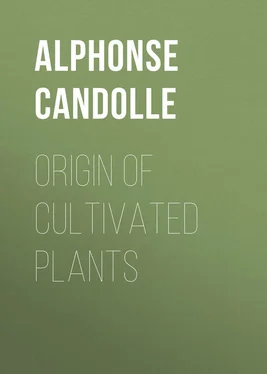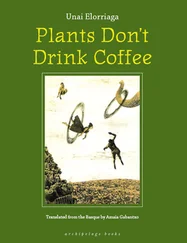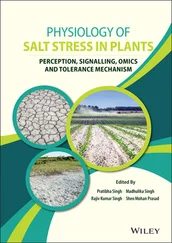Alphonse Candolle - Origin of Cultivated Plants
Здесь есть возможность читать онлайн «Alphonse Candolle - Origin of Cultivated Plants» — ознакомительный отрывок электронной книги совершенно бесплатно, а после прочтения отрывка купить полную версию. В некоторых случаях можно слушать аудио, скачать через торрент в формате fb2 и присутствует краткое содержание. Жанр: foreign_antique, foreign_prose, на английском языке. Описание произведения, (предисловие) а так же отзывы посетителей доступны на портале библиотеки ЛибКат.
- Название:Origin of Cultivated Plants
- Автор:
- Жанр:
- Год:неизвестен
- ISBN:нет данных
- Рейтинг книги:4 / 5. Голосов: 1
-
Избранное:Добавить в избранное
- Отзывы:
-
Ваша оценка:
- 80
- 1
- 2
- 3
- 4
- 5
Origin of Cultivated Plants: краткое содержание, описание и аннотация
Предлагаем к чтению аннотацию, описание, краткое содержание или предисловие (зависит от того, что написал сам автор книги «Origin of Cultivated Plants»). Если вы не нашли необходимую информацию о книге — напишите в комментариях, мы постараемся отыскать её.
Origin of Cultivated Plants — читать онлайн ознакомительный отрывок
Ниже представлен текст книги, разбитый по страницам. Система сохранения места последней прочитанной страницы, позволяет с удобством читать онлайн бесплатно книгу «Origin of Cultivated Plants», без необходимости каждый раз заново искать на чём Вы остановились. Поставьте закладку, и сможете в любой момент перейти на страницу, на которой закончили чтение.
Интервал:
Закладка:
The various causes which favour or obstruct the beginnings of agriculture, explain why certain regions have been for thousands of years peopled by husbandmen, while others are still inhabited by nomadic tribes. It is clear that, owing to their well-known qualities and to the favourable conditions of climate, it was at an early period found easy to cultivate rice and several leguminous plants in Southern Asia, barley and wheat in Mesopotamia and in Egypt, several species of Panicum in Africa, maize, the potato, the sweet potato, and manioc in America. Centres were thus formed whence the most useful species were diffused. In the north of Asia, of Europe, and of America, the climate is unfavourable, and the indigenous plants are unproductive; but as hunting and fishing offered their resources, agriculture must have been introduced there late, and it was possible to dispense with the good species of the south without great suffering. It was different in Australia, Patagonia, and even in the south of Africa. The plants of the temperate region in our hemisphere could not reach these countries by reason of the distance, and those of the intertropical zone were excluded by great drought or by the absence of a high temperature. At the same time, the indigenous species are very poor. It is not merely the want of intelligence or of security which has prevented the inhabitants from cultivating them. The nature of the indigenous flora has so much to do with it, that the Europeans, established in these countries for a hundred years, have only cultivated a single species, the Tetragonia , an insignificant green vegetable. I am aware that Sir Joseph Hooker 1 1 Hooker, Flora Tasmaniæ , i. p. cx.
has enumerated more than a hundred Australian species which may be used in some way; but as a matter of fact they were not cultivated by the natives, and, in spite of the improved methods of the English colonists, no one does cultivate them. This clearly demonstrates the principle of which I spoke just now, that the choice of species is more important than the selection of varieties, and that there must be valuable qualities in a wild plant in order to lead to its cultivation.
In spite of the obscurity of the beginnings of cultivation in each region, it is certain that they occurred at very different periods. One of the most ancient examples of cultivated plants is in a drawing representing figs, found in Egypt in the pyramid of Gizeh. The epoch of the construction of this monument is uncertain. Authors have assigned a date varying between fifteen hundred and four thousand two hundred years before the Christian era. Supposing it to be two thousand years, its actual age would be four thousand years. Now, the construction of the pyramids could only have been the work of a numerous, organized people, possessing a certain degree of civilization, and consequently an established agriculture, dating from some centuries back at least. In China, two thousand seven hundred years before Christ, the Emperor Chenming instituted the ceremony at which every year five species of useful plants are sown – rice, sweet potato, wheat, and two kinds of millet. 2 2 Bretschneider, On the Study and Value of Chinese Botanical Works , p. 7.
These plants must have been cultivated for some time in certain localities before they attracted the emperor’s attention to such a degree. Agriculture appears, then, to be as ancient in China as in Egypt. The constant relations between Egypt and Mesopotamia lead us to suppose that an almost contemporaneous cultivation existed in the valleys of the Euphrates and the Nile. And it may have been equally early in India and in the Malay Archipelago. The history of the Dravidian and Malay peoples does not reach far back, and is sufficiently obscure, but there is no reason to believe that cultivation has not been known among them for a very long time, particularly along the banks of the rivers.
The ancient Egyptians and the Phœnicians propagated many plants in the region of the Mediterranean, and the Aryan nations, whose migrations towards Europe began about 2500, or at latest 2000 years B.C., carried with them several species already cultivated in Western Asia. We shall see, in studying the history of several species, that some plants were probably cultivated in Europe and in the north of Africa prior to the Aryan migration. This is shown by names in languages more ancient than the Aryan tongues; for instance, Finn, Basque, Berber, and the speech of the Guanchos of the Canary Isles. However, the remains, called kitchen-middens, of ancient Danish dwellings, have hitherto furnished no proof of cultivation or any indication of the possession of metal. 3 3 De Naidaillac, Les Premiers Hommes et les Temps Préhistoriques , i. pp. 266, 268. The absence of traces of agriculture among these remains is, moreover, corroborated by Heer and Cartailhac, both well versed in the discoveries of archæology.
The Scandinavians of that period lived principally by fishing and hunting, and perhaps eked out their subsistence by indigenous plants, such as the cabbage, the nature of which does not admit any remnant of traces in the dung-heaps and rubbish, and which, moreover, did not require cultivation. The absence of metals does not in these northern countries argue a greater antiquity than the age of Pericles, or even the palmy days of the Roman republic. Later, when bronze was known in Sweden – a region far removed from the then civilized countries – agriculture had at length been introduced. Among the remains of that epoch was found a carving of a cart drawn by two oxen and driven by a man. 4 4 M. Montelius, from Cartailhac, Revue , 1875, p. 237.
The ancient inhabitants of Eastern Switzerland, at a time when they possessed instruments of polished stone and no metals, cultivated several plants, of which some were of Asiatic origin. Heer 5 5 Heer, Die Pflanzen der Pfahlbauten , in 4to, Zurich, 1865. See the article on “Flax.”
has shown, in his admirable work on the lake-dwellings, that the inhabitants had intercourse with the countries south of the Alps. They may also have received plants cultivated by the Iberians, who occupied Gaul before the Kelts. At the period when the lake-dwellers of Switzerland and Savoy possessed bronze, their agriculture was more varied. It seems that the lake-dwellers of Italy, when in possession of this metal, cultivated fewer species than those of Savoy, 6 6 Perrin, Étude Préhistorique de la Savoie , in 4to, 1870; Castelfranco, Notizie intorno alla Stazione lacustre di Lagozza ; and Sordelli, Sulle piante della torbiera della Lagozza , in the Actes de la Soc. Ital. des Scien. Nat. , 1880.
and this may be due either to a greater antiquity or to local circumstances. The remains of the lake-dwellers of Laybach and of the Mondsee in Austria prove likewise a completely primitive agriculture; no cereals have been found at Laybach, and but a single grain of wheat at the Mondsee. 7 7 Much, Mittheil d. Anthropol. Ges. in Wien , vol. vi.; Sacken, Sitzber. Akad. Wien. , vol. vi. Letter of Heer on these works and analysis of them in Naidaillac, i. p. 247.
The backward condition of agriculture in this eastern part of Europe is contrary to the hypothesis, based on a few words used by ancient historians, that the Aryans sojourned first in the region of the Danube, and that Thrace was civilized before Greece. In spite of this example, agriculture appears in general to have been more ancient in the temperate parts of Europe than we should be inclined to believe from the Greeks, who were disposed, like certain modern writers, to attribute the origin of all progress to their own nation.
In America, agriculture is perhaps not quite so ancient as in Asia and Egypt, if we are to judge from the civilization of Mexico and Peru, which does not date even from the first centuries of the Christian era. However, the widespread cultivation of certain plants, such as maize, tobacco, and the sweet potato, argues a considerable antiquity, perhaps two thousand years or thereabouts. History is at fault in this matter, and we can only hope to be enlightened by the discoveries of archæology and geology.
Читать дальшеИнтервал:
Закладка:
Похожие книги на «Origin of Cultivated Plants»
Представляем Вашему вниманию похожие книги на «Origin of Cultivated Plants» списком для выбора. Мы отобрали схожую по названию и смыслу литературу в надежде предоставить читателям больше вариантов отыскать новые, интересные, ещё непрочитанные произведения.
Обсуждение, отзывы о книге «Origin of Cultivated Plants» и просто собственные мнения читателей. Оставьте ваши комментарии, напишите, что Вы думаете о произведении, его смысле или главных героях. Укажите что конкретно понравилось, а что нет, и почему Вы так считаете.











